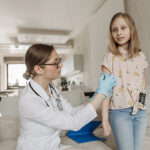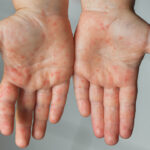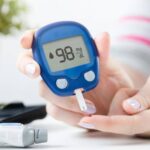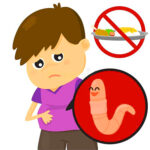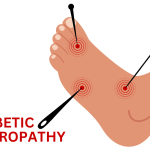As you may know, diabetes is not only an adult disease—kids can also be affected, kids can also have diabetes. Today’s report discusses how to recognize the symptoms of diabetes in children and whether it can be cured. Let’s find out.

Types of Diabetes
Diabetes mainly has two types: Type 1 and Type 2. Children usually develop Type 1 diabetes, while Type 2 diabetes is more common in adults. However, in some rare cases, children can also develop Type 2 diabetes. Recently, the incidence of Type 2 diabetes among adolescents has been on the rise.
Over the last two decades, Type 2 diabetes has been slowly increasing. This trend includes a rise in diabetes among children as well. It’s also been observed that the incidence of Type 1 diabetes has increased after the COVID-19 pandemic. All the children who were diagnosed with Type 1 diabetes post-COVID were positive for COVID antibodies. It’s believed that the beta cells in their pancreas may have been damaged by the COVID infection, resulting in Type 1 diabetes, but this is still under research.
Difference Between the Two Types
In Type 1 diabetes, the body produces little to no insulin. The pancreas contains beta cells, which are responsible for insulin production. If these cells are damaged, the body either produces no insulin or produces very little, leading to insulin deficiency and Type 1 diabetes. In Type 2 diabetes, the body produces insulin, but a resistance develops in the parts of the body where insulin acts, making it less effective.
In some cases, children are diagnosed with diabetes from birth, known as neonatal diabetes. This is a genetic disorder that makes children very ill, with dangerously high blood sugar levels. In such cases, life can become critical.
Diabetes: The Epicenter of Various Diseases and Kids can also have diabetes
Diabetes can lead to several complications. One of the most dangerous is diabetic ketoacidosis (DKA), which occurs in about 60% of children newly diagnosed with Type 1 diabetes. This condition can be fatal.
If diabetes is not managed properly, it can lead to vision loss, known as diabetic retinopathy. It can also cause kidney problems, known as diabetic nephropathy, and may lead to heart complications.
Watch for Symptoms in Your Child
Be vigilant if you notice your child suddenly drinking excessive amounts of water, urinating frequently, experiencing an increased appetite without gaining weight, or losing weight rapidly. Many parents assume that drinking more water is a good sign, but when paired with other symptoms, it could indicate a serious issue. If treatment is not started promptly, the child could face other severe problems such as difficulty breathing or loss of consciousness.
Can Diabetes Be Prevented?
Type 1 diabetes cannot be prevented, but Type 2 diabetes can be. Lifestyle is a major factor in Type 2 diabetes, so proper lifestyle changes are essential.
For the first six months of life, a baby should only consume breast milk. Avoid giving cow’s milk during this period. Children should avoid fast food and engage in regular physical activity as they grow. Obesity should be prevented by providing a high-fiber diet.
Currently, the only treatment for Type 1 diabetes is insulin injections, which must be taken throughout life, along with a proper diet and physical exercise. While Type 1 diabetes is not curable, it is treatable.


